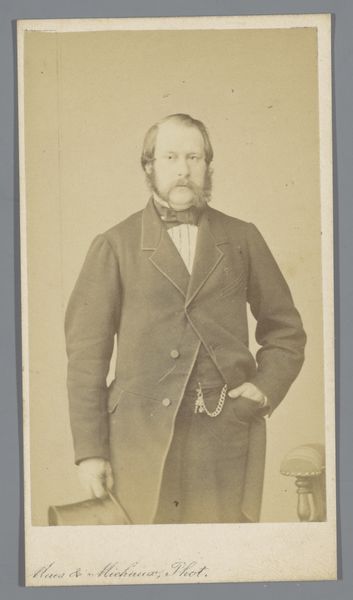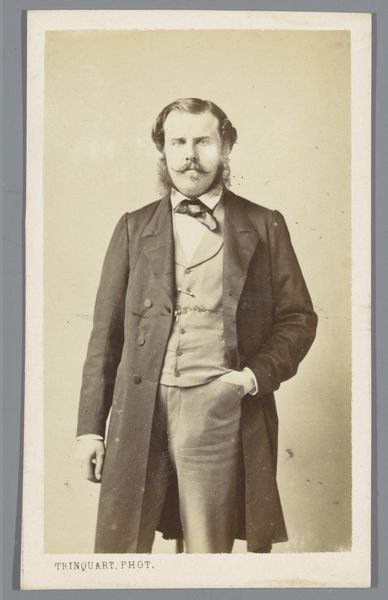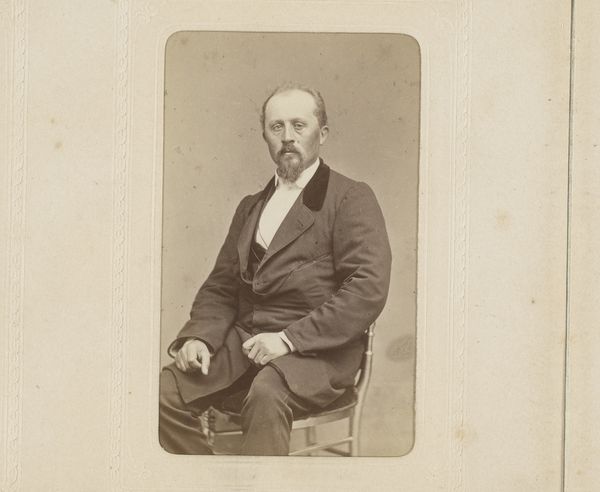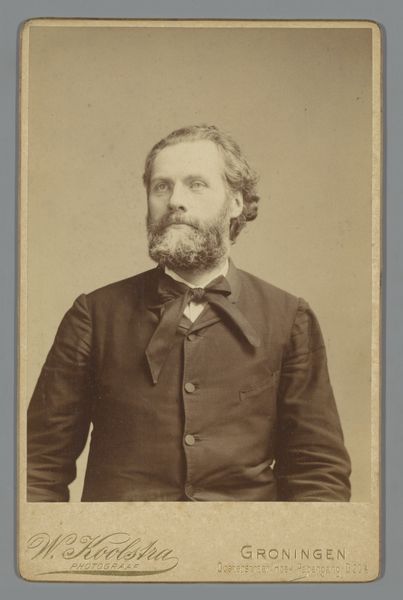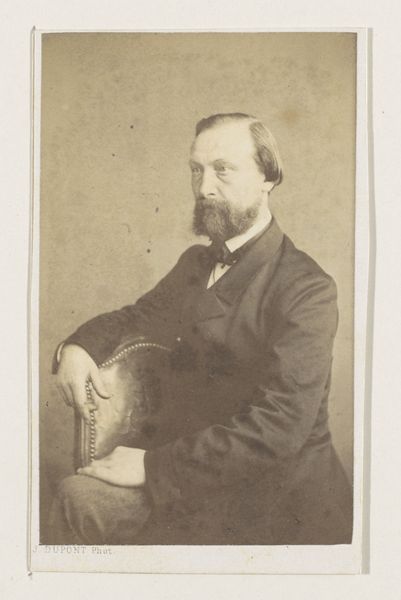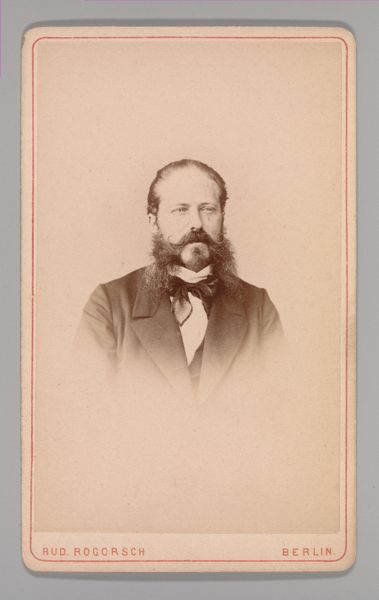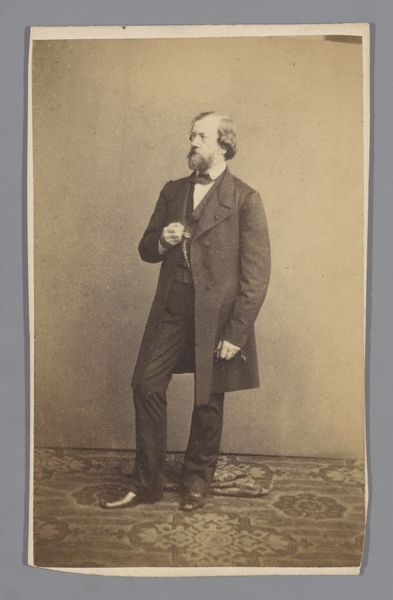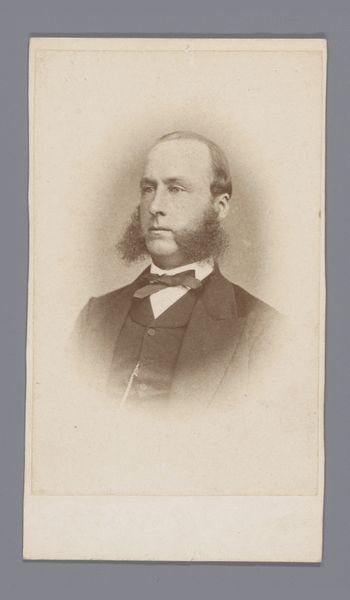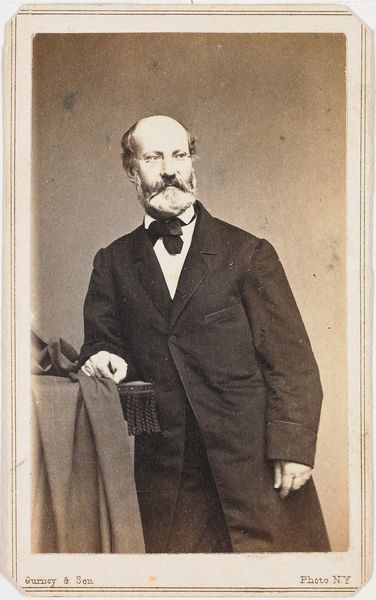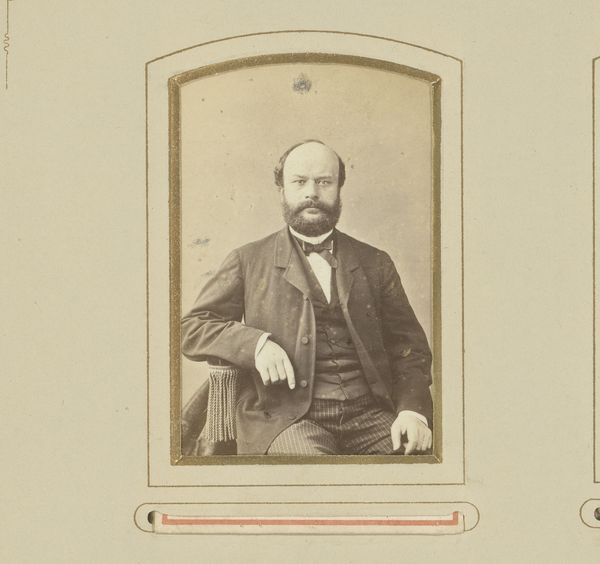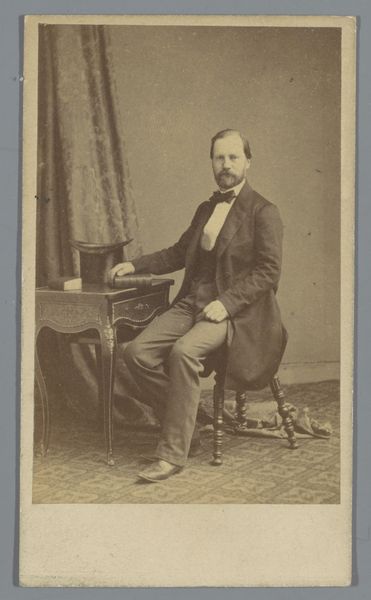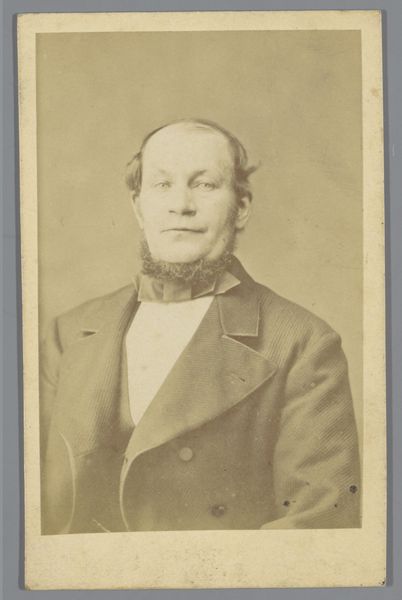
daguerreotype, photography
#
portrait
#
daguerreotype
#
photography
#
classicism
#
history-painting
#
realism
Dimensions: height 104 mm, width 59 mm
Copyright: Rijks Museum: Open Domain
Editor: Here we have a daguerreotype from 1862-1863 by Maes & Michaux, titled "Portrait of an Unknown Man." It's striking how detailed the image is for such an early photographic process. What particularly stands out to you? Curator: It is certainly rich in detail. The surface texture of his coat, the crispness of the beard, are beautifully rendered, yes. Let us examine how the figure interacts with the pictorial space. Notice how his hand gently rests on the ornate table – that touch anchors the figure, creating a compositional stasis. Does it evoke a feeling, or reaction, for you? Editor: Yes, there's a real sense of stillness and composure. It’s also a very formal pose. But there’s something… slightly melancholic, perhaps, in his eyes. Is that just my reading, or do you see it too? Curator: Melancholy is understandable, yes, though consider if it is an attribution prompted by the muted tonalities and formal construction itself? Perhaps the controlled gradations in light are affecting your experience of his visage? The artist clearly orchestrated these aesthetic factors, drawing from classical portraiture's pictorial order and structure. Do you see, then, how structure impacts the affective interpretation? Editor: I think I see what you mean. By focusing on light, composition, and material qualities, we are invited to understand the image less as a spontaneous expression of emotion, and more as a carefully constructed presentation of self, one framed by societal conventions of pose and expression. Curator: Precisely! By engaging with the image's formalism we start to understand the symbolic construction that becomes legible. Editor: That’s fascinating. It has opened up a totally different way of seeing the work for me!
Comments
No comments
Be the first to comment and join the conversation on the ultimate creative platform.
